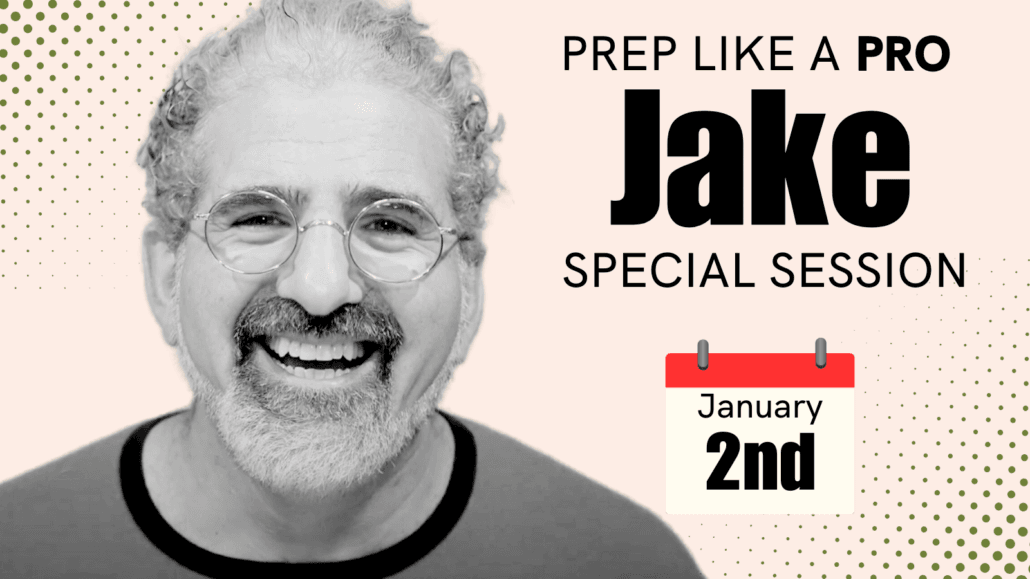[spb_text_block pb_margin_bottom=”no” pb_border_bottom=”no” width=”1/1″ el_position=”first last”]
What’s Wrong With Arrested Development?
By Jacob Krueger
[/spb_text_block] [divider type=”thin” text=”Go to top” full_width=”no” width=”1/1″ el_position=”first last”] [spb_text_block pb_margin_bottom=”no” pb_border_bottom=”no” width=”1/1″ el_position=”first last”]
For fans of the original Arrested Development, this weekend was one of the most anticipated TV events in history. The return, after 8 years, of a show commonly thought of as the funniest sitcom in TV history. So why did so many people end up cutting their long awaited Arrested Development marathon short after watching the first two episodes of the new season? And what can aspiring TV writers learn from the mistakes of the Arrested Development team?
Understand the Engine Of Your Show.
To understand why the new Arrested Development fails, you need to understand why the old Arrested Development succeeds. TV viewers come to a show because they are seeking a specific kind of experience, the nature of which is promised and delivered in every episode. Each episode needs to be different, but in some ways, it needs to feel the same. In order to do this consistently, TV shows need an engine to generate those episodes and make sure they all fit together and deliver the same feeling, even if they do so in different ways.
Here’s How an Engine Works.
To understand the idea engine, let’s start with a show that is much simpler than Arrested Development. Remember Gilligan’s Island? Each episode, the castaways would come up with an inventive new way of getting off the island. And just when it seemed like they would finally make their escape, Gilligan would find a creative way to screw it up. In order to generate a new episode of Gilligan’s Island, all the writer had to do was think up a new way for the characters to get off the island, and then come up with an unexpected way for Gilligan to accidentally destroy the plan.
This engine could not only generate endless episodes of the show but also allowed the writers to do so without having to reinvent the wheel. With the immense pressure and time constraints of TV comedy writing, writers can’t afford to put their time into creating a new premise for every episode. They need the time to focus on execution—so that they can wring the most possible comedy out of every situation.
That’s why they call it a sit-com.
Because the drama isn’t generated by the character’s changing, but by putting characters who inherently cannot change into situations that are particularly difficult for them to deal with. Think of a hit show like Seinfeld, and you’ll see how the idea of a show’s engine relates to the dominant trait of each character. In order to create an episode of Seinfeld, all showrunnerLarry David had to do was think up a slightly annoying trait in a potential love interest and put Jerry in a situation where he couldn’t deal with it.
Jerry Seinfeld never had to change. He just had to be himself.
You’ll see that’s the same engine Larry David later used in his own show, Curb Your Enthusiam. It’s just Seinfeld, without the charm. Each episode is generated simply by coming up with another mundane situation than anyone else in the world could handle, and watching Larry David screw it up.
Think about recent hit shows like How I Met Your Mother, 30 Rock, Always Sunny In Philadelphia and Big Bang Theory, and you’ll see that all of these shows have simple engines, which drive every episode and allow them to all fit together into a unified whole.
Even complex TV dramas have engines.
Think about a hit show like HBO’s The Wire. It might seem that this series broke all the rules, allowing its characters to change in profound ways, building storylines that spanned multiple episodes, killing off its most beloved characters just when we were getting to know them, and introducing new characters and completely new storylines in each season. But The Wire also had an engine. Each season revolved around one aspect of Baltimore’s complex socio-political landscape and involved an out-of-the-box thinker, who over the course of each season would get beaten down by the system.
Lose your engine, and you lose your series.
Think about what happened to Always Sunny In Philadelphia in Season 6, when Mac got fat and Charlie stopped obsessing about the waitress, and you’ll see what happens when a show loses his engine. Or think about the difference between the first season of Six Feet Under, when then engine of the show was the family’s inability to deal with their father’s death, and what happened in later seasons, when the characters were no longer dealing with that loss, and the storytelling devolved to soap opera worthy plot-twists.
It’s not that changing the engine of a series is bad. There were great episodes in late seasons of Six Feet Under and some hilarious comedy even in Always Sunny’s disappointing sixth season. The problem is that when you change the engine, you change the feeling of the show. And it’s that feeling that your audience is seeking.
The Original Arrested Development Also Had An Engine
Think about the first three seasons of Arrested Development and you’ll see how clear the engine of that show was, and how a great pilot sets the engine in motion for every subsequent episode. The pilot of Arrested Development began with Michael losing everything, just at the moment he expected to finally get the recognition he deserved by becoming head of the family company. Instead, his father is arrested, his spend-thrift, emotionally manipulative mother is put in charge of the company, the family fortune is lost, and Michael finds himself stuck living in a model home with his estranged sister, her sexually confused husband and their trouble-making daughter, who just happens to be the forbidden love-interest for Michael’s goody-two-shoes son.
The engine for the entire series grows out of the irony of this too-close-for-comfort setting, and the dominant traits of each character, as Michael struggles in each episode to do the right thing, and the rest of his family turns his morality against him, as they hilariously manipulate for their own selfish desires.
It’s just Gilligan’s Island.
With Michael playing the role of Skipper & Professor to his father & mother’s Mr. & Mrs. Howell. And the whole cast conspiring in the role of Gilligan to spoil Michael’s best laid plans get off the “island.”
It’s Not PLOT That Makes The Original Arrested Development So Successful.
It’s the simple engine of the characters’ unchanging and unfulfilled desires, and the unique and ironic ways in which each character pursues those desires in every single episode.
Michael: Struggles to do the right thing & save the family from some newly immoral manipulation from his mother and father.
George Michael: Fights his sexual desire for his cousin Maeby, and to be what he perceives to be the perfect son for his father, at the cost of his own sanity.
Lindsay: Tries to vicariously earn her father’s approval, by drawing the sexual attention of every man she encounters, only to be stymied by her shocking inability to get even a prisoner to gawk at her, or her sexually confused husband to sleep with her.
Tobias: Fails in a new attempt to build his acting career, while overcompensating for his confused sexuality.
Maeby: Finds a new way to punish her mother and father, usually by manipulating her naïve and desperately in-love cousin George Michael to defy his own ethical code.
Gob: Manipulates to be the favored child, and for status over his “perfect” brother Michael, usually by failed attempts to prove his status as the world’s greatest magician.
Buster: Tries desperately to extract himself from his mother’s domination, only to find he wants to go back to living under her thumb.
Lucille Bluth: Infantilizes her son Buster, and plays Michael & Lindsay against each other, in service of some materialistic scheme.
George Bluth: Conspires with Lucille or Gob to wrestle control of the company from his son Michael, while reinventing himself in some way that makes the most out of his new prison life.
The New Arrested Development Also Has An Engine. It’s Just a Different Engine.
Imagine what would happen if you took the characters of Gilligan’s Island, but stuck them each on their own separate plot of land. That’s essentially the problem with the new Arrested Development. Rather than being the story of a family trapped in their model-home, and Michael’s foiled attempts to save them. It becomes the story of each character’s separate journey, in relation to the same series of events.
As pointed out in a recent NY Times article, this makes for some fascinating Rashoman style structure. But it has about as much to do with the original Arrested Development as The Fast and The Furious 6 has to do with Frances Ha.
Robbed of the Gilligan’s Island engine of the original series, and the escalating hijinks of each character’s manipulations, the writers are forced to generate a new plot structure for each episode, resulting in a new series that feels completely different from the original, despite its similarities in style. Rather than concentrating on recreating the legendary joke density of the original series, the writers have their focus on new revealing information to the audience, as we visit and revisit the same scenes from each character’s perspective. Rather than wrestling irony out of each character’s inability to change, the writers turn the greatest strength of the original show into its greatest weakness, exposing the cartoon-like qualities of its supporting cast by forcing each character to drive an entire episode. And rather than keeping true to the frantic pace of it’s 22-minute precursor, the new commercial-free Netflix version balloons up to over 30 minutes per episode, diffusing the joke density, and completely changing the pace of the original version.
There May Be A Place For The New Engine. But It’s Not Arrested Development.
The first rule of television: if it ain’t broke, don’t fix it. As brilliant as the idea of a Rashoman style sitcom may be, even if it were executed perfectly, it still wouldn’t have been Arrested Development. It would have been a completely different show, driven by a completely different engine, and therefore delivering an entirely different feel from the original. The key with any sequel, whether it’s The Godfather II, The Hangover II, or Indiana Jones & The Temple of Doom, is to think about the promise the original made to the audience, and to deliver on that same promise, in a slightly different way. Otherwise, no matter how brilliant your execution, your audience is going to leave angry. Because you didn’t deliver the feeling they were seeking.
How Can Aspiring Series Writers Use This Information?
If you’re working on a pilot for a series, you need to think about the engine your pilot is setting up. Will a producer reading your pilot see the engine immediately, and know that they could generate 7 seasons of your series, without running out of ideas or losing their direction? Are the dominant traits for your characters clear? Is the structure of each episode clearly defined by the structure of the pilot? Are the wants and complications of each character, in each episode, boiled down to a simple engine that a creative producer can replicate forever? And does that structure fit within the existing format of shows on your target network?
Remember, whether you’re a young writer shopping a series pilot, or an aspiring staff writer seeking a job on an existing series, producers are going to want to see more than just a brilliant original pilot from you. They’re going to ask for two spec episodes from two different shows, to make sure you understand how tv series work, and that you can generate episodes that fit in seamlessly with the engine of any show.
The Success Of Any Television Series Depends On Maintaining A Permanent State Of “Arrested Development”
So when you’re writing your sample spec episodes, make sure you understand the engines of the shows you’re writing for, and make sure you’re creating within those parameters. Your job is not to change the rules. Your job is to show the creative ways you can play within them, and deliver the feeling the audience is coming for in a way that could be plugged perfectly into the existing episodes, without anyone knowing a new writer was responsible. Show how well you can honor the engine, and you just may find yourself with a job on a TV show. Ignore it, and you just may realize you’ve “made a huge mistake”.
If you’d like to learn more about writing for TV Comedy, please check out our upcoming TV Writing Class, with acclaimed Showrunner Jerry Perzigian starting Thursday, March 28th. It’s the only class of its kind, run exactly like a writers room on a real TV series, taught by a showrunner with over 25 years experience on some of the most successful sitcoms in television history, and featuring the work of 12 talented student writers!
[/spb_text_block]



